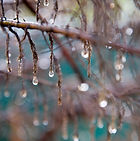
Computer Art using Photoshop
Prerequisites
Art 1, Art 2 is highly recommended, Computer 1
One trimester - 1 credit
Students must be a dedicated art student with a genuine interest in learning about the area of computer-generated art and computer graphics.
Course Content
Students will be introduced to the computer as a design tool using Adobe PhotoShop software to create artwork and computer graphics. Emphasis in class will be on the knowledge and use of the elements and principles of Art and Design. You will use a variety of media (scanners, computer, digital camera and traditional media) to learn and apply conventional illustrative and electronic imaging techniques. Projects will focus on the art principles and art elements. Students will evaluate their own work and the artwork of others through the use of group critique and individual comments on grading forms
Assignment Links:
Digital Illustration Assignment
Learning Photoshop - topics for the first two weeks of class

Layers
Photoshop layers are like sheets of stacked acetate. You can see through transparent areas of a layer to the layers below. You move a layer to position the content on the layer, like sliding a sheet of acetate in a stack. You can also change the opacity of a layer to make content partially transparent.

You use layers to perform tasks such as compositing multiple images, adding text to an image, or adding vector graphic shapes. You can apply a layer style to add a special effect such as a drop shadow or a glow
Layers in depth - click here for web page information

Painting Effects
Adobe Photoshop provides several tools for painting and editing image color. The Brush tool and the Pencil tool work like a traditional drawing tool applying color with brush strokes. Tools like the Eraser tool, Blur tool, and Smudge tool modify the existing colors in the image. In the options bar for each of these painting tools, you can set how color is applied to an image and choose from preset brush tips.
To learn more about the many ways to use painting effects, click here.

Selections
A selection isolates one or more parts of your image. By selecting specific areas, you can edit and apply effects and filters to portions of your image while leaving the unselected areas untouched.
To view a video on more selection techniques, click here: Selection video

Masks and Channels
When you select part of an image, the area that is not selected is masked, or protected from editing. So, when you create a mask, you isolate and protect areas of an image as you apply color changes, filters, or other effects to the rest of the image. You can also use masks for complex image editing such as gradually applying color or filter effects to an image.

Use Quick Mask mode to convert a selection to a temporary mask for easier editing. The Quick Mask appears as a colored overlay with adjustable opacity. You can edit the Quick Mask using any painting tool or modify it with a filter. Once you exit Quick Mask mode the mask is converted back to a selection on the image.
To learn more about how to use masks and channels, click here.


